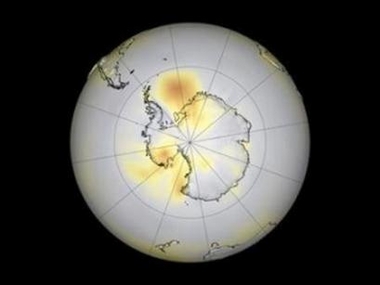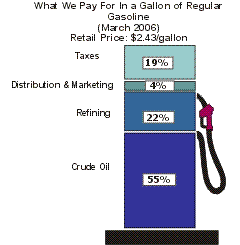 Thousands of demonstrators march through the streets of downtown Los Angeles May 1, 2006, as part of a nationwide protest staged by immigrant rights advocates to protest proposed legislation to reform U.S. immigration law. Photo Credit: Lucas Jackson/Reuters
Thousands of demonstrators march through the streets of downtown Los Angeles May 1, 2006, as part of a nationwide protest staged by immigrant rights advocates to protest proposed legislation to reform U.S. immigration law. Photo Credit: Lucas Jackson/ReutersMost citizens report that the traffic on the freeways was similar to Sunday mid-morning bliss. Some teachers were heard reporting on talk radio that more teaching was accomplished due to the impression that the trouble makers and the reduced English understanding students were not in attendance ... discussions and interchange flowed without disruptions, distractions, and additional translation clarifications.
At MAXINE, the wish is that if only we could try a month without (illegal) immigrants. Many put forth the argument that "we are a nation of immigrants", but those who hold onto this position are forgetting that "FIRST, we are a nation under the rule of law".
Our politictions are not serious when they take the oath of office after they win an election. The part of the oath that they are conveniently dropping in their representation is the part that states "to uphold the laws of the land"! Mayor Antonio, for his part, stated that if one plans to carry a flag during the PRO illegal immigrant rally, carry an American flag ... thank you Mayor, for coming down hard on the side of having folks respect our laws.
Excerpts from Reuters -
Immigrants flex economic muscle in boycott
By Jill Serjeant and Dan Whitcomb
LOS ANGELES (Reuters) - Hundreds of thousands of mostly Hispanic immigrants walked off the job and rallied in cities across the United States on Monday, wielding their economic clout to demand rights for illegal immigrants.
Factories closed, day labor jobs went begging, children skipped school and cargo was left on docks in what the organizers called "A Day without Immigrants."
The largely Latino crowds chanted "Si, se puede!" or "Yes, we can!" and banged drums while waving American and Mexican flags. Rallies stretched from the lettuce fields of Central California to the streets of Chicago.
The demonstrations were aimed at pressuring the U.S. Congress into granting amnesty to some 12 million illegal immigrants and scuttle a proposal to build a wall along the Mexican border.
"What the marches have done is give a human face to the immigration issue in the United States today," said Harry Pachon, professor of public policy at the University of Southern California.
--
"Today we say with one voice that we want fair and sensible bipartisan immigration reform," said Los Angeles Mayor Antonio Villaraigosa, the son of a Mexican immigrant and a lifelong campaigner for legalization of illegal immigrants.
The economic impact of the boycott was unclear and some lawmakers and conservative groups predicted a backlash.
--
"It's a celebration of immigrants. It isn't just a protest or even a boycott," said Los Angeles Roman Catholic Cardinal Roger Mahony, who has urged priests to disobey laws that would criminalize those who help illegal immigrants.
In Chicago, more than 300,000 people marched, waving flags and pushing baby strollers. Demonstrations unfolded in Denver, Houston and San Francisco and thousands marched in Mexico in solidarity with compatriots who make up the bulk of the illegal immigrants.
--
Actress Susan Sarandon told a festive rally in New York's Union Square, "We now know that you are no longer silent, you are no longer invisible and let's keep it that way."
Several major meat-packing plants were closed to allow workers to demonstrate, and 90 percent of workers who unload cargo at the busy ports of Los Angeles and Long Beach joined the strike.
--
"The government has to realize how important Latinos are to this economy and give us full rights," said American Apparel customer service representative Ruben Eustaquio.
Read All>>That's right! We have to give up our American sovereignty in order to award FULL RIGHTS to all non-citizens.
How would Ruben Eustaquio, customer service representative for American Apparel, like it if everyone in the world was awarded CUSTOMER status with American Apparel without buying any products from American Apparel ... do you think he would like his job then? How long do you think he, or anyone else, would be able to KEEP their job if this happened?
Folks, we are under a foreign occupation in our own country and it is time to take our country back. MAXINE is not anti-immigrant, but MAXINE is for a reasoned, managed approach to immigration under the rule of law. When are our sworn-in, oath taking, lawmakers going to stand up and ENFORCE our existing laws?
... Just askin'!
UPDATE: This from Pajamas Media News -
Economy takes small hit from boycottMay 3, 2006 (Knight Ridder/Tribune Business News delivered by Newstex) Monday's immigration boycott and protest march knocked an estimated $52 million out of the Los Angeles economy, a fraction of the region's $1.2 billion daily activity, the Los Angeles County Economic Development Corp. estimated Tuesday.LAEDC chief economist Jack Kyser noted that the impact would be particularly felt in the Latino community."A lot of them live paycheck to paycheck, so this has a big impact on their lives," Kyser said. "The truck drivers were out, (the LAUSD) took a big hit, there were lost sales from the closed businesses along the route and probably extra costs for the city with overtime and for the MTA."The truck drivers to whom Kyser referred made their voices heard particularly sharply at the ports of Los Angeles and Long Beach, with a 90 percent no-show rate Monday.The Los Angeles Hispanic Chamber of Commerce estimated that 70 percent of its small businesses felt some losses. Vice chairman Manolo Cevallos said the members he'd spoken to would be supportive of future shutdowns of up to a week."There was an impact, but it was worth it," he said. "Restaurants, mini-markets, shops selling bread, meat markets, clothing stores, clothing factories, the grocery business, flower shops -- small Hispanic businesses were affected, but they're telling me that they'd do it again. They're showing loyalty."Several San Fernando Valley-based manufacturers were able to juggle production and shipping. San Fernando-based Fabe's All Natural Bakery, which has nearly 175 workers, worked an extra day over the weekend, then took Monday off.Dick Van Patten's Natural Balance Pet Foods in Pacoima brought a few people in to handle warehouse shipping, but closed its dog- and lion-food factories. President Joey Herrick said about half of his 60 workers attended the marches and that he'd be able to make up the delayed production fairly quickly."Let's hope they don't do it every month, but for one day, it was OK," Herrick said. "You're entitled to personal days, so if you let us know in advance, that's OK.""It was inconvenient, but a lot of people showed up for the march, so we had to go with it and support our workers however we could."
 Camp Bastion by night. A calm before the storm. Photo Credit: Michael Yon
Camp Bastion by night. A calm before the storm. Photo Credit: Michael Yon










